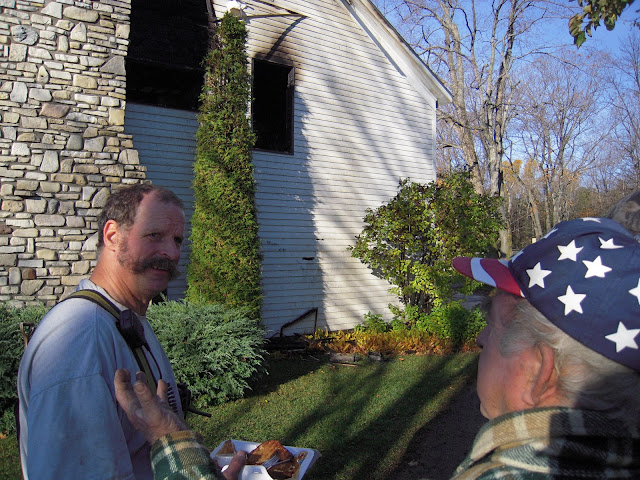Bay Shipbuilding, Sturgeon Bay, Wisconsin -
A visit to the yard Tuesday morning found the Noble's repowering project closing in on the startup date.
Piping and hoses for engine cooling and for hydraulics have been flushed (metal filings, dirt) and pressure tested using a piece of equipment set up for that purpose on the main deck. Fluids fills were to have begun today. Engine room overhead insulation was well on its way to being installed, and pipe fitters had maybe half of a day left. Electricians will need a few more days, and that will including the re-installation of new battery supply wiring. At the last minute, this wire which is commonly approved by American Bureau of Shipping on commercial work vessels, was cited as not meeting code by U.S. Coast Guard plan review in Washington D.C. Given the late notification, an appeal based on amperage and application was made, but in the end, the technical manual won out, as this wire type does not meet specifications for use in this installation. Wire type with approved spec numbers will be installed as soon as the shipment arrives at the yard.
 |
| Port engine, showing yellow-coated battery supply wires in ready-to-connect status. Will be replaced with new wire assured to meet USCG approval. |
 |
| Device used to pressure test hydraulic systems. |
In the background of the top photo is the Spirit of Chicago, a dinner cruise and excursion vessel that homeports at Navy Pier. This vessel began main engine changeout at about the same time as the Robert Noble, with new John Deere marine engines. Its owner hopes to set sail soon from Sturgeon Bay to Chicago, but this vessel has the same battery supply wiring issue to contend with, prior to receiving Coast Guard approvals.
Maritime Museum
Last evening I was invited to speak at the Door County Maritime Museum in Sturgeon Bay, the first of the coming winter's speaker series. My chosen topic was "Island Transportation in Winter," and I was quite pleased with the audience turnout, perhaps 75 or so persons. Using slides and historical examples to illustrate how winter transportation here has evolved, I'm hopeful a few might have been enticed to try a winter's journey to Door County's northernmost township. Unless you live here, work here, or have friends or relatives here, it is not the direction most people think of traveling in winter.
 |
| Jon Gast, Dick Purinton, Bob Desh (Museum Director |
The Maritime Museum's spaces have been decorated for the holidays, and so was the tug John Purves, moored along the waterfront. I would recommend a museum visit as a great winter family outing. There are exhibits of interest for all ages, both entertaining and educational, and its all within a comfortable indoor setting. Single-day individual passes may be purchased, along with tours of the tug tickets, or if repeat visits or museum membership activities are in your future, then family or corporate memberships can be purchased.
Let the Holidays begin! - Dick Purinton






















